 As the demand for features increases and the requirements for driving comfort rise, the number of electronic components used in cars has also increased. This leads to the need for new transmission channels for data transfer between various control units.
As the demand for features increases and the requirements for driving comfort rise, the number of electronic components used in cars has also increased. This leads to the need for new transmission channels for data transfer between various control units.
Function of the Data Bus
The automotive data bus enables safe, reliable, and fast data transfer, allowing for richer functionalities.
Types of Data Buses
CAN Bus
LIN Bus
MOST Bus
FlexRay Bus
C7 Topology Diagram
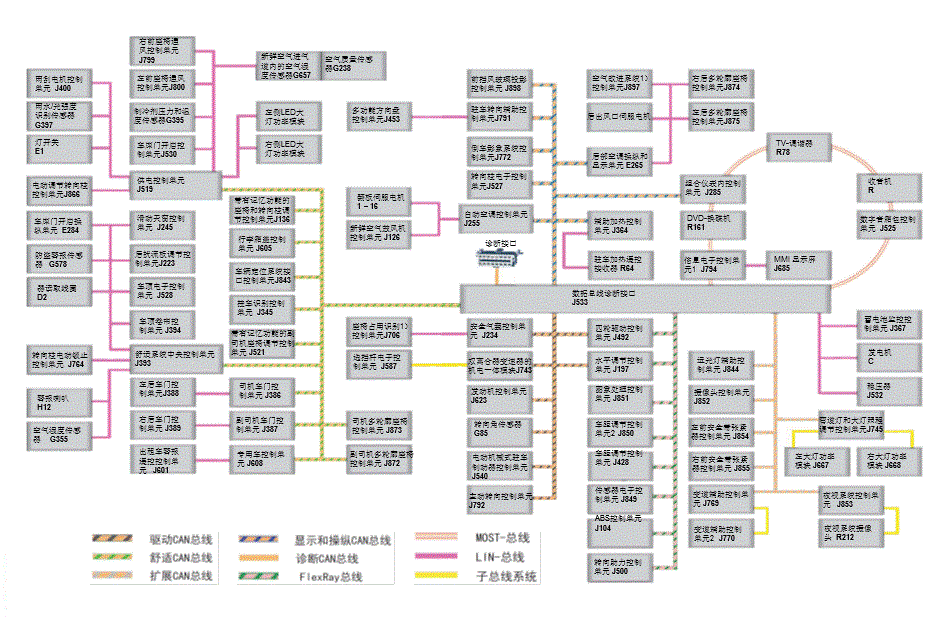
Network Composition and Characteristics of the Data Bus
CAN Bus
Fast transmission speed
Related control units can share sensors
Fewer wiring harnesses and smaller control units save space
 Drive Bus Characteristics
Drive Bus Characteristics
Transmission rate: 500 kbit/s
Time required to transmit 1 bit: 0.002 ms (on average, one message takes about 0.2 ms)
No single wire operating mode
Comfort Bus Characteristics
Transmission rate: 100 kbit/s (A8D4, A6C7, A7: 500 kbit/s)
Time required to transmit 1 bit: 0.010 ms (on average, one message takes about 1.1 ms)
Single wire operating mode available
CAN Bus Measurement – VAG 1598/38
Measurement must be done with specialized tools; incorrect measurement methods can damage wires and affect signal transmission.
Line Maintenance
Professional maintenance must be performed as described below; otherwise, signal interference may affect the normal operation of the system.
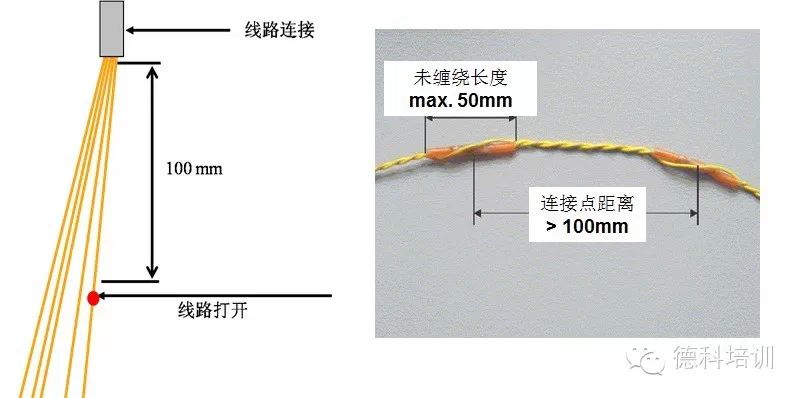
LIN Bus
Maximum transmission rate: 20 kbit/s
Single wire
Master-slave controller principle
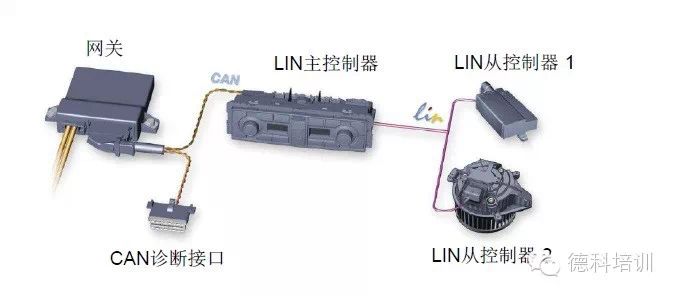 MOST Bus
MOST Bus
Can achieve high data transmission rates (21.2 Mbit/s)
Optical fibers replace wires for signal transmission, making it insensitive to electromagnetic radiation
Better transmission quality/noise handling through digitization
Lightweight
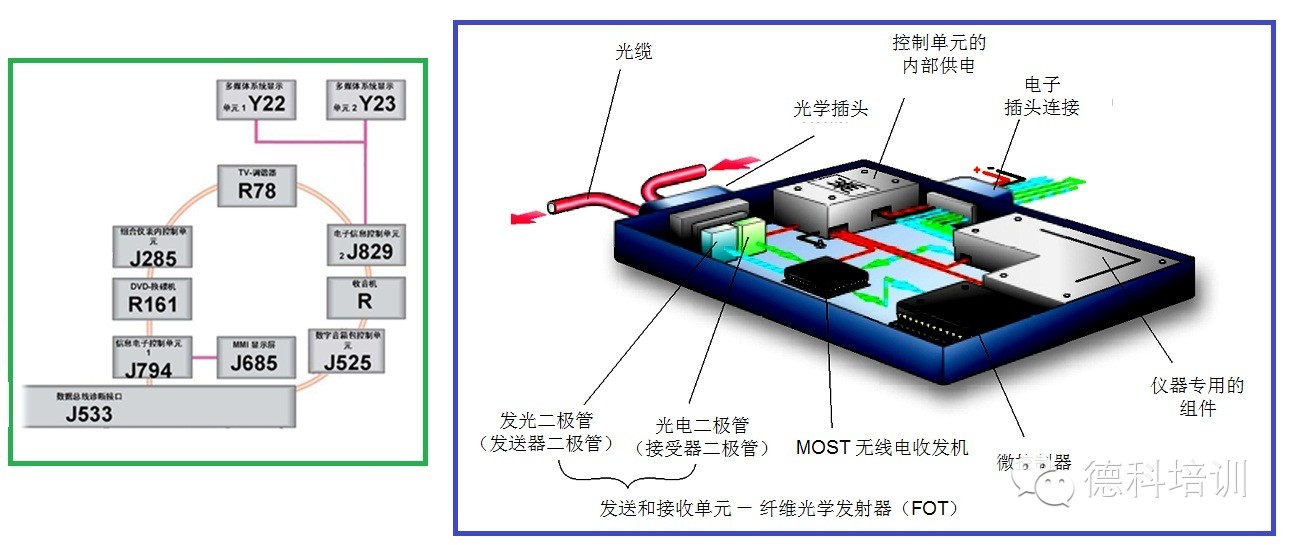 Optical Fiber Connector Maintenance Tool VAS 6223A
Optical Fiber Connector Maintenance Tool VAS 6223A
Optical fiber maintenance differs from ordinary wire maintenance; specialized tools must be used to ensure reliable system operation.
FlexRay Bus
Two-wire bus system
Time-controlled data transmission
Data transmission rate: up to 10 Mbit/s
Data transmission has three signal states
„Idle“ (idle)
„Data0“ (data0)
„Data1“ (data1)
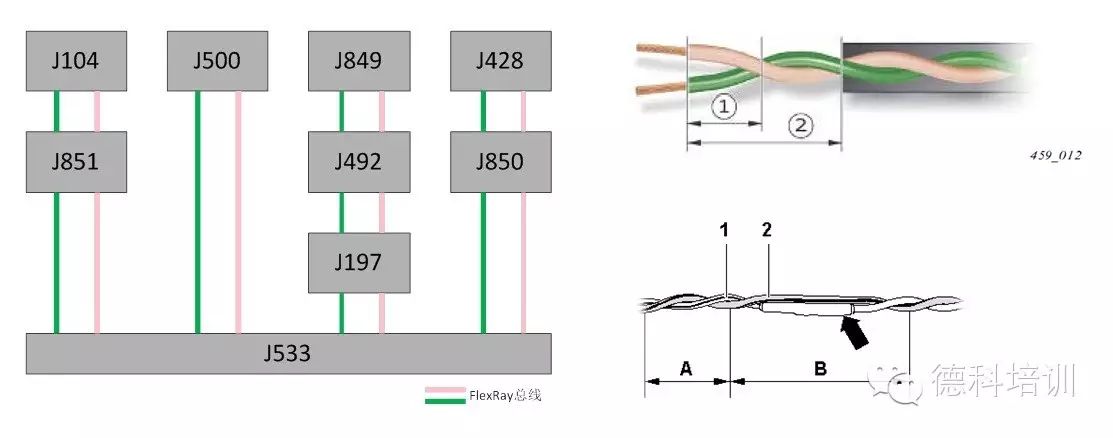 Notes
Notes
Use a 2-core sheath wire with a cross-sectional area of 0.35 mm2.
When twisting wires, ensure that the twisting length B<50mm.
Untwisted wires (for example, in the wire compression connector area) must not exceed a segment length of A=30mm.
Stripped wire length must not exceed 100mm.
In non-twistable maintenance positions, use compression connectors with heat-shrink tubing and built-in adhesive, and waterproof insulating tape on the stripped outer part.
Comparison of Different Buses
Taking A8 D4 as an example

Gateway
Function of the Gateway
Due to differences in voltage levels, resistance configurations, and transmission rates of the buses, a conversion is needed between the two systems. This conversion process is achieved through the gateway.
Gateway Principle
Similar to the function of a station/platform, which allows passengers to change vehicles to reach their respective destinations using different transportation speeds.
Distribution Function
To execute a certain function, several control units must exchange data to achieve the goal. Therefore, there is always one control unit responsible for the entire function process.
Click the top left corner“Deco Training” to follow!You can also join:QQ Group 333141639, please note your region and name for verification. Thank you.
Micro Store URL:http://weidian.com/s/261942616
